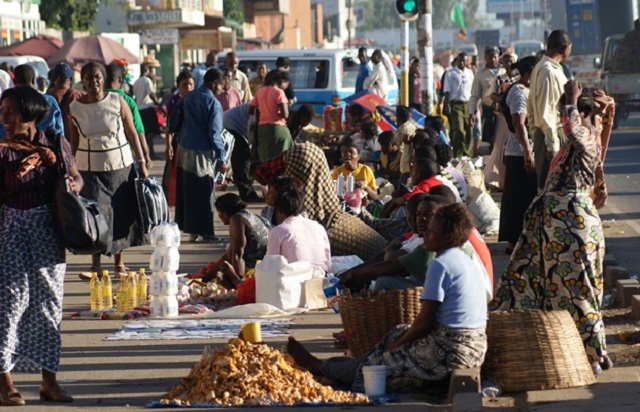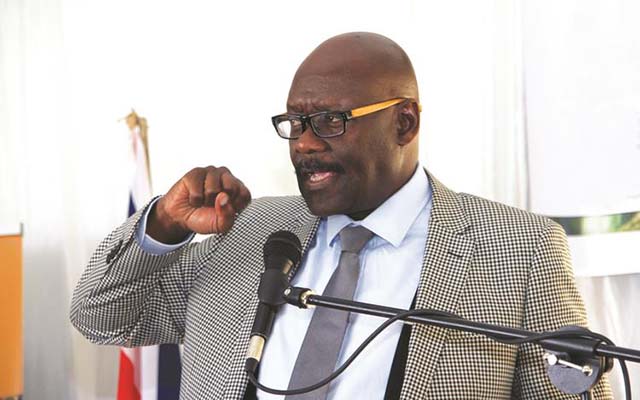Zambia writing its own development story


The vendors were there but never a distraction and most were at designated places. The air was ecstatic and the talk on everyone’s mouth including radio stations was about the under-20 national team. It had surpassed expectations, united people and gave them hope that theirs was a recognisable country in the community of nations.
Lovemore Ranga Mataire
Lusaka (Zambia) — Many pundits have dismissed the “Africa Rising” mantra as some kind of ruse meant to lull Africans from dealing with fundamental issues hampering development on the continent.
However, a recent visit to Zambia proves that “Africa Rising” is concrete and not a ruse. If Zambia’s example can be a reflection of what’s happening in other African countries, then the continent is far from being stuck in quagmire.
Just a decade ago, Kafue Town, 90km from Chirundu on the border with Zimbabwe, resembled everything that must not happen to a country endowed with so much human and natural resources. The infrastructure was just threadbare. Disillusionment and despair was written virtually on almost every ordinary person’s face.
Fast forward to 2017 and the whole landscape has transformed. Hope has replaced disillusionment and despair. A new verve is visible on people’s faces and the infrastructure looks replenished. The town is home to Lee Yeast Zambia, the sole manufacturer of baking yeast and other baking products in the country. About 219 000 inhabitants live in Kafue Town.
My visit to Zambia coincided with the halting of the Zambian under-20 national team’s fine run in the World Cup by Italy in South Korea. The nation’s hopes of becoming the only second African nation to win the Under-20 World Cup were dashed when they lost 2-3 to a 10-men Italy in the quarter finals.
As heartbreaking as it was, the loss never dampened the people’s spirits. From the office workers, guards and even the “I can do everything for you boss”, most were dressed in Zambian national colours. It was a sight to behold and one would be forgiven for thinking that the Under-20 national side had won the trophy.
After the usual formalities and without a soul asking for a tip or a bribe, I crossed into Kenneth Kaunda’s country and what a marvel it was. The shops resembled typical small town style with very familiar names that resonated with the Shona language. But the tarmac looked freshly tarred with clear markings. It was world class and just a joy to drive.
At the 90km peg, there was a checkpoint manned by a single soul visibly anxious to pass a greeting and not fault finding. The man had no pen or receipt book.
Huge intercontinental trucks dominated the traffic. In just under an hour’s drive, Kafue Town silhouetted, which I thought was Lusaka probably because of the avalanche of neon and flood lights that lit the sky and the tarmac. Both sides of the road are replete with industries, car garages, shops but very few roadside vendors.
Excited by the visible changes in infrastructure and neon lights, I inquired about Lusaka’s CBD from a passerby.
“No sir, this is Kafue. You still have about 45 km to go,” said the exuberant passerby probably trudging his way home. I smiled, thanked him and plodded on.
In about 20 minutes, I thought I had finally reached Lusaka judging by the ever increasing neon lights and the volume of traffic. Just to be sure, I stopped at a bus stop to ask for directions.
“Are you going to Lusaka sir?”
Shocked, I said yes.
“This is Chilanga Town, Lusaka is just a few kilometres away,” my helpful guide quipped already opening the front door.
The man who introduced himself as Michero was a chatterbox. In no time I got to know about multiple issues affecting Zambia. Food was plenty but disposable income was scarce. He showed me a photo in his phone which looked like a mansion under construction. I thought it was his house but he was quick to say he was actually a builder.
In a few minutes, we were in Lusaka. If Kafue and Chilanga’s transformations had shocked my wits, Lusaka literally caught me off guard. It was a hive of activity, with most business in the CBD still open at around 7pm.
The vendors were there but never a distraction and most were at designated places. The air was ecstatic and the talk on everyone’s mouth including radio stations was about the under-20 national team. It had surpassed expectations, united people and gave them hope that theirs was a recognisable country in the community of nations.
Instinctively, I bought two newspapers. One privately owned and the Daily Mail. The lead story was the same. It was about the exploits of the Under-20 national team. The Daily Mail screamed; “Take Heart” with President Lungu saluting the lads. The back page had: “Future bright.”
It was in the Daily Mail’s centre pages where I realised that what I had just witnessed all the way from Chirundu was not a ruse. Zambia’s path to economic transformation was real.
A Daily Mail columnist by the name Kalengo Simukoko succinctly described what is happening in Zambia and Africa as an economic revolution.
“Up until now, Africa’s development story has been a sad one while China and India have received much of the spotlight when it comes to emerging economies. Things are about to change because Africa’s growth potential and opportunities now surpass most other regions of the world and the land of Kush is taking the centre stage of the global investment agenda,” writes Simukoko.
In his view, domestic demand continues to boost growth in many African countries, and it is projected that by 2040, Africa will have a larger workforce than China or India totalling more than 1.1 billion people.
Coupled with World Bank estimation that more than half of global population growth between now and 2050 will occur in Africa, Simukoko has all the reasons for being optimistic especially with the fact that the continent has the highest proportion of youths who are the most productive segment of the population.
But that’s not all. Economic conditions have improved since the turn of 2017 with the World Bank projecting an improved growth rate of 4 percent. Good rainfall in 2016/2017 agricultural season improved agricultural output and quickened the replenishment of hydro-electric reservoirs.
In its recent report on Zambia’s economic outlook, the World Bank commended the Zambian government for improving its 7th National Development Plan 2017-2021. The plan, “Accelerating Development Efforts Towards Vision 2030 Without Leaving Anyone Behind,” calls for fundamental shift in the way resources are being allocated, taking into account global and regional trends. The plan has five pillars:
– Economic diversification and job creation
– Poverty and vulnerability
– Reduced developmental inequalities
– Enhancing human development
– Conducive governance environment for economic diversification
The ultimate goal of the 7th National Development Plan is to create a diversified and resilient economy for sustained growth and social economic development. It also encompasses a result-oriented performance management system to be used to measure progress of its implementation.
The positive outlook for the Zambian economy is based on: stable and low copper prices and a budget geared towards a more sustainable fiscal stance supporting medium-term growth.
According to zambianivest.com investment in the mineral and non mineral sectors in Zambia remain attractive.
Yes, Zambia’s march to development has been painfully slow but its people have never stopped dreaming of better days different from the image of an impoverished and powerless country. Zambia may be far behind South Africa and other African countries but its busy writing its own story and the good thing is that it is the Zambians who are the core “scripters” of this beautiful narrative. — The Southern Times












Comments